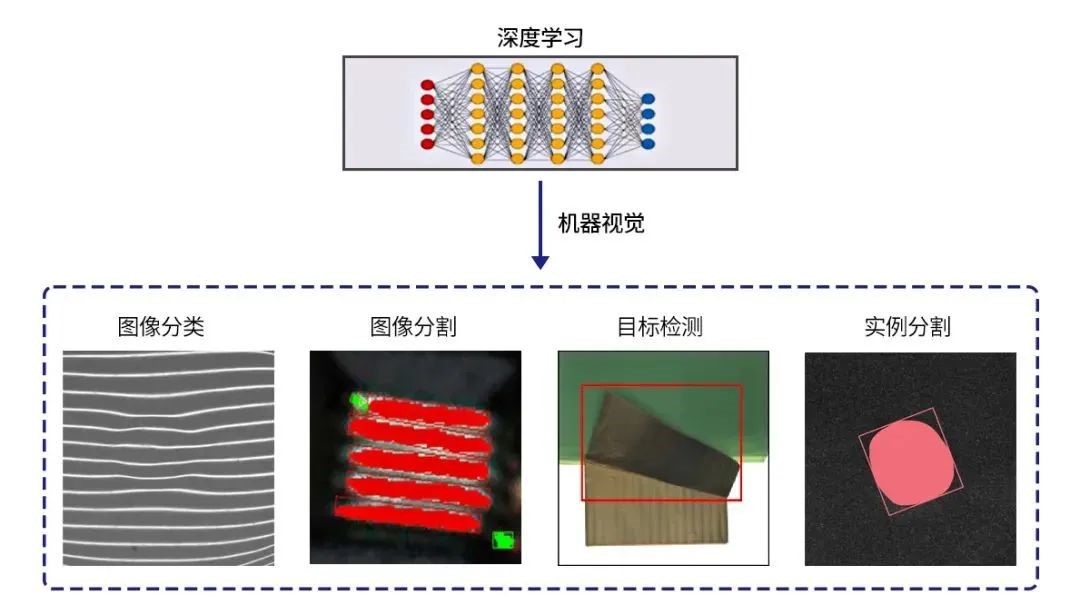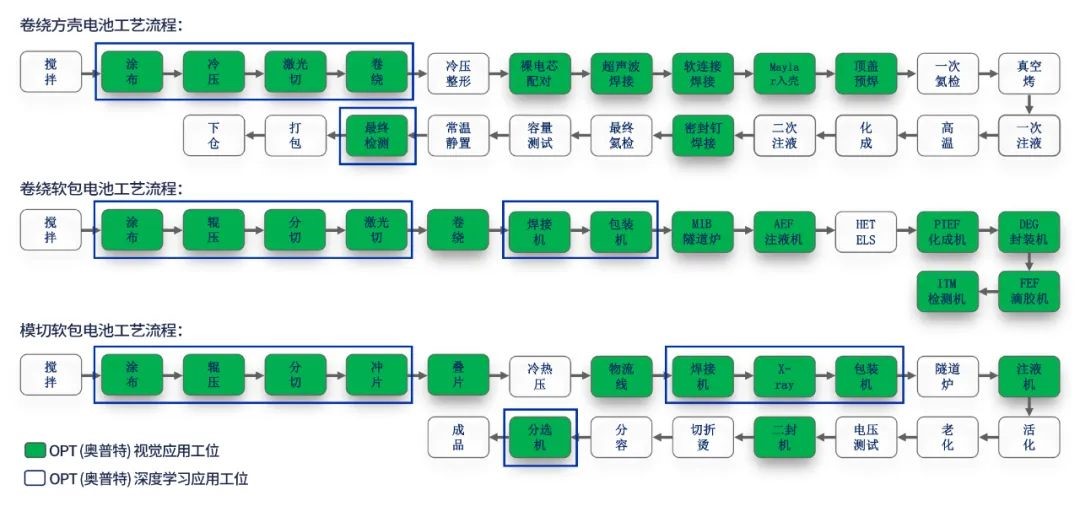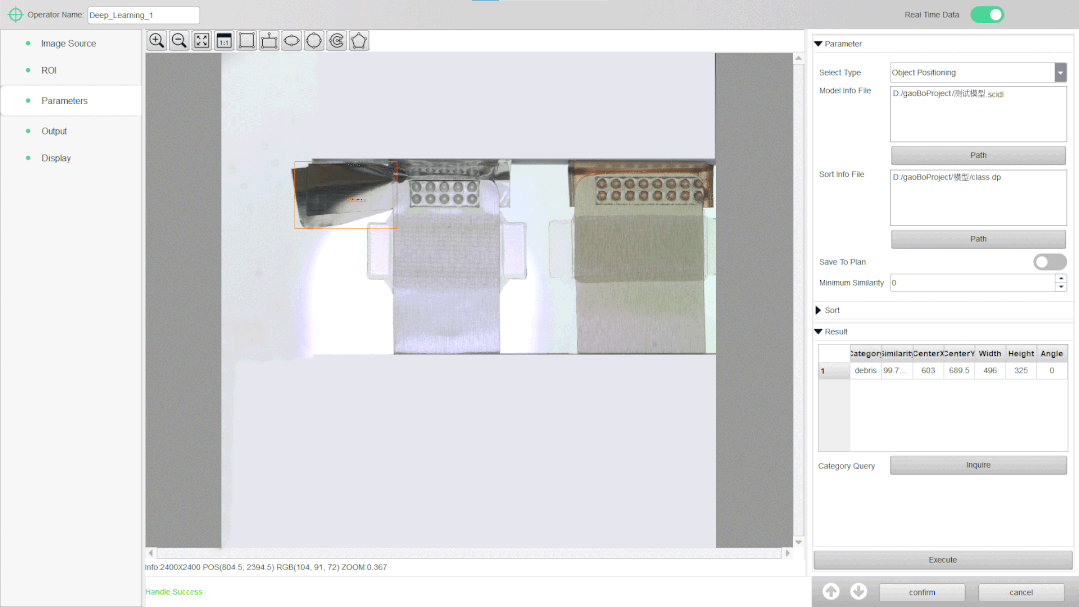On December 1, OPT held an online seminar on the theme of “Machine Vision Application Based on Deep Learning”, sharing the core image analysis technology and application cases of deep learning software SciDeepVision, such as abnormal defect detection algorithm, small sample learning, adaptive training, transfer learning, and more. This symposium was given by Dr. Gao Hongchao from OPT R&D Center.
Deep learning software SciDeepVision
Automatic extraction of feature information
Deep learning is the core technology of artificial intelligence. Combined with the machine vision system of deep learning, it can make the machine have the ability of analysis and learning like human beings, so as to recognize data information such as text and images, and solve various complex pattern recognition problems.
Application of deep learning in machine vision
The three elements of deep learning are algorithms, computing power, and data. In machine vision applications, powerful computing power is required and a large amount of data is relied upon. In this process, deep learning applications usually encounter problems such as insufficient sample data and excessive reliance on hardware performance, which in turn affects the efficiency and accuracy of image analysis.
The deep learning software SciDeepVision launched by OPT breaks through the bottleneck of traditional deep learning. It integrates labeling, training and evaluation. It has the characteristics of no programming and convenient operation. It automatically extracts features and includes more than 20 key technologies. And functions, covering data regularization and labeling, AI basic model, model performance improvement, model training, evaluation visualization, etc.

Deep Learning Algorithm Process Visualization
Integrate small sample learning, transfer learning and other technologies
Reduce reliance on data
SciDeepVision software has achieved key technological innovations in image analysis such as anomaly detection, text recognition, small-sample learning, transfer learning, and lightweight models. Better performance, can save a lot of manpower and time costs.
SciDeepVision software adopts the abnormal defect detection algorithm, which only needs normal samples and does not need to mark the defect position. The detection model can automatically identify the image with defects and accurately locate the defect position; Information pictures can generate large-scale high-quality text images with source domain style.
Technical principle and application of OPT deep learning software SciDeepVision
Small sample text recognition algorithm detection comparison
In the process of generating detection models, deep learning software usually has problems such as robustness and poor generalization due to reasons such as few defect samples, large shape differences, and frequent model changes. In order to solve such problems, OPT (Opt) Three major technological innovations have been made to the SciDeepVision software, namely the small sample learning framework, adaptive training technology and transfer learning technology.
Technical principle and application of OPT deep learning software SciDeepVision
few-shot learning techniques
Among them, adaptive training technology can recommend valuable data for current detection from historical data, and manually label and optimize the model, reducing the workload of data sorting by half, greatly improving the accuracy of AI model detection, and low training costs.
Technical principle and application of OPT deep learning software SciDeepVision
Adaptive Training Technology
In addition, the transfer learning technology of SciDeepVision software can shorten the model training cycle without affecting the robustness and generalization of the AI detection model, and the quality inspection of similar processes can even realize one-click changeover, shortening the time for product changeover .
Technical principle and application of OPT deep learning software SciDeepVision

transfer learning techniques
Vision Applications Based on Deep Learning
Covering multiple processes in the lithium battery manufacturing process
SciDeepVision software has been widely used in industries such as lithium batteries and 3C. For example, in the manufacturing process of lithium-ion batteries, there are many kinds and shapes of appearance defects, which cannot be detected by traditional definition rules. The SciDeepVision software has been applied to more than ten key processes in the lithium battery manufacturing process, including coating, die cutting, laser slitting, lamination, winding, welding, packaging and other links.
Technical principle and application of OPT deep learning software SciDeepVision

Application of SciDeepVision software in lithium battery process
Taking the detection of welding defects of lithium battery tabs as an example, welding defects have rich forms, it is difficult to define their shape edges, and the defect position is random. Using SciDeepVision software, convolutional neural network can be used for feature extraction, and the category information of defect segmentation can be quickly output.
Technical principle and application of OPT deep learning software SciDeepVision

Application of SciDeepVision software in tab defect detection
In addition, based on deep learning, OPT designs a general-purpose and lightweight barcode positioning algorithm to enhance and correct barcode images, and can achieve high-speed and high-precision barcode positioning with only a small amount of barcode data. .